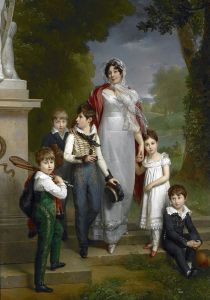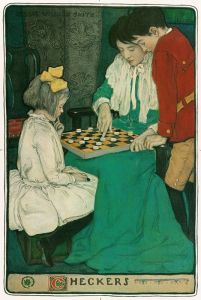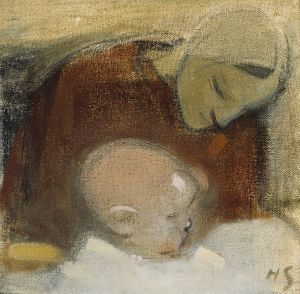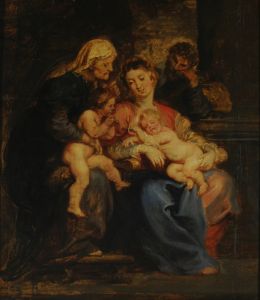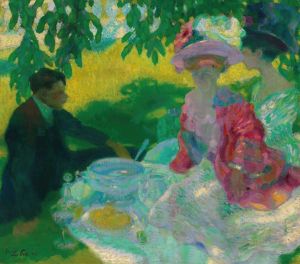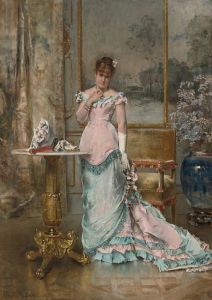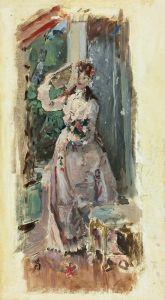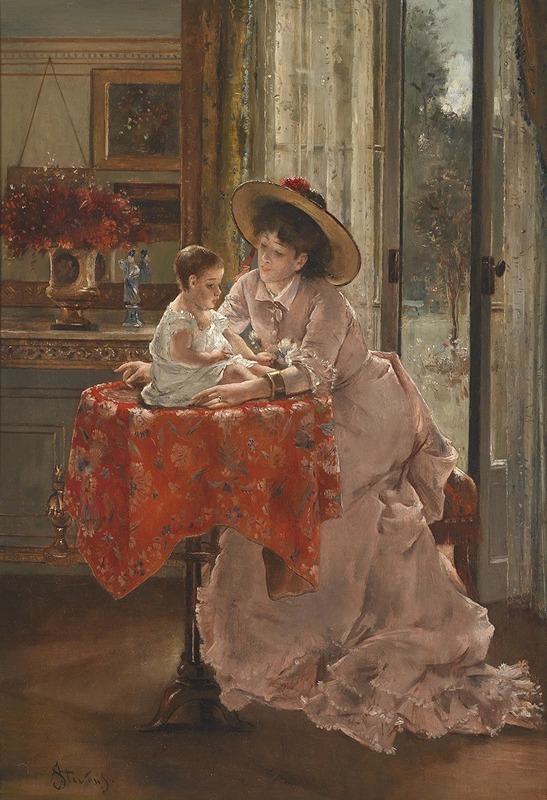
Die glückliche Mutter
A hand-painted replica of Alfred Stevens’s masterpiece Die glückliche Mutter, meticulously crafted by professional artists to capture the true essence of the original. Each piece is created with museum-quality canvas and rare mineral pigments, carefully painted by experienced artists with delicate brushstrokes and rich, layered colors to perfectly recreate the texture of the original artwork. Unlike machine-printed reproductions, this hand-painted version brings the painting to life, infused with the artist’s emotions and skill in every stroke. Whether for personal collection or home decoration, it instantly elevates the artistic atmosphere of any space.
Alfred Stevens (1823–1906) was a Belgian painter known for his elegant and detailed depictions of women, often capturing scenes of domestic life and bourgeois society in the 19th century. One of his works, Die glückliche Mutter (translated as The Happy Mother), exemplifies his ability to portray intimate and tender moments with a sense of refinement and emotional depth.
This painting depicts a mother and child in a serene and affectionate moment, reflecting Stevens' interest in themes of motherhood and familial bonds. The composition is characterized by its careful attention to detail, particularly in the textures of fabrics and the subtle expressions of the figures. Stevens' use of light and color enhances the warmth and intimacy of the scene, drawing the viewer into the private world of the subjects.
Stevens was influenced by both the Realist and Impressionist movements, and his works often combined elements of both. In Die glückliche Mutter, his realist approach is evident in the meticulous rendering of the figures and their surroundings, while the soft, atmospheric quality of the painting hints at Impressionist techniques. This blend of styles was a hallmark of Stevens' work, setting him apart from many of his contemporaries.
The painting reflects the societal ideals of the time, particularly the emphasis on the role of women as caretakers and nurturers within the family. Stevens frequently explored these themes in his art, offering a glimpse into the domestic lives of women in the 19th century. His works were highly regarded during his lifetime, and he enjoyed considerable success, particularly in France, where he spent much of his career.
While specific details about the creation or provenance of Die glückliche Mutter are not widely documented, it remains an example of Stevens' skill in capturing the beauty and complexity of everyday life. Today, his works are held in various museums and private collections, and he is remembered as one of the leading painters of his era, particularly in the genre of domestic and portrait painting.
This painting, like many of Stevens' works, continues to be appreciated for its technical mastery and its ability to evoke a sense of timeless human connection.





